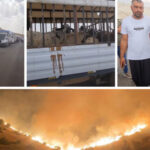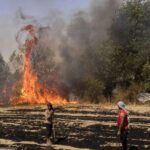Erzurum / Erzirom
Erzurum (Armenian: Կարին, romanized: Karin, Kurdish: Erzirom) is a city in eastern Anatolia / North Kurdistan / Western Armenia which stands 1,900 meters (6,233 feet) above sea level. Erzurum had an official population of 367,250 in 2010.
The city was originally known in Armenian as Karno K’aghak’ (Armenian: Կարնոյ քաղաք), meaning city of Karin, to distinguish it from the district of Karin (Կարին). The 40,000-strong Armenian population was deported from the city and killed en masse during the 1915 Armenian Genocide. Their cultural institutions, including churches, clubs, and schools, were looted, destroyed, or otherwise left derelict. When Russian forces occupied Erzurum in 1916, there were scarcely 200 Armenians left alive.
Erzurum is notable for the small-scale production of objects crafted from Oltu stone: most are sold as souvenirs and include prayer beads, bracelets, necklaces, brooches, earrings and hairclips. One of the largest source of income and economic activity in the city has been Atatürk University. Established in 1950, it’s one of the largest universities in Turkey, with over 40,000 students. Tourism is also important. Erzurum has winter sports facilities and hosted the 2011 Winter Universiade.
Erzurum is the ending point of the South Caucasus Pipeline, also called the Baku–Tbilisi-Erzurum (BTE) pipeline. Erzurum will also be the starting point of the planned Nabucco pipeline which will carry natural gas from the Caspian Sea to the EU.


